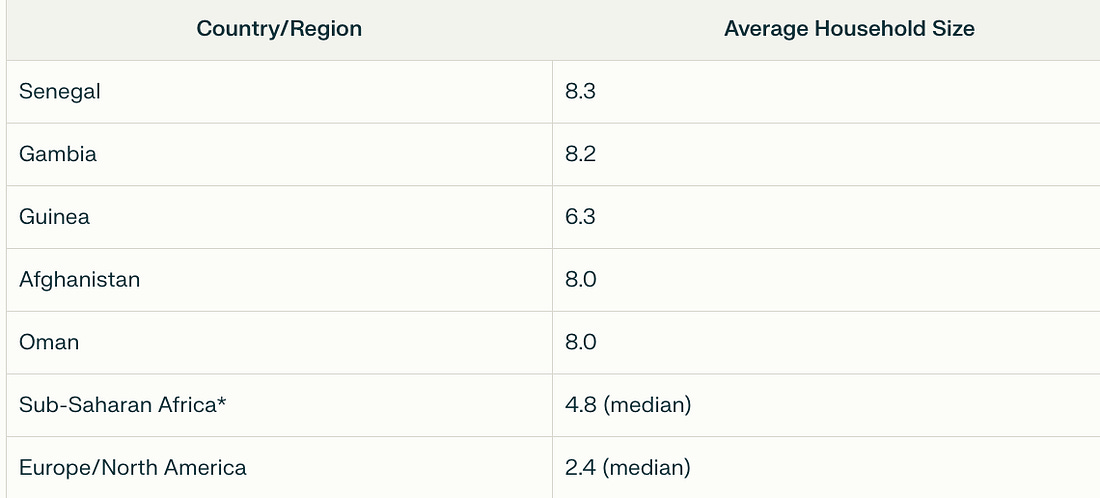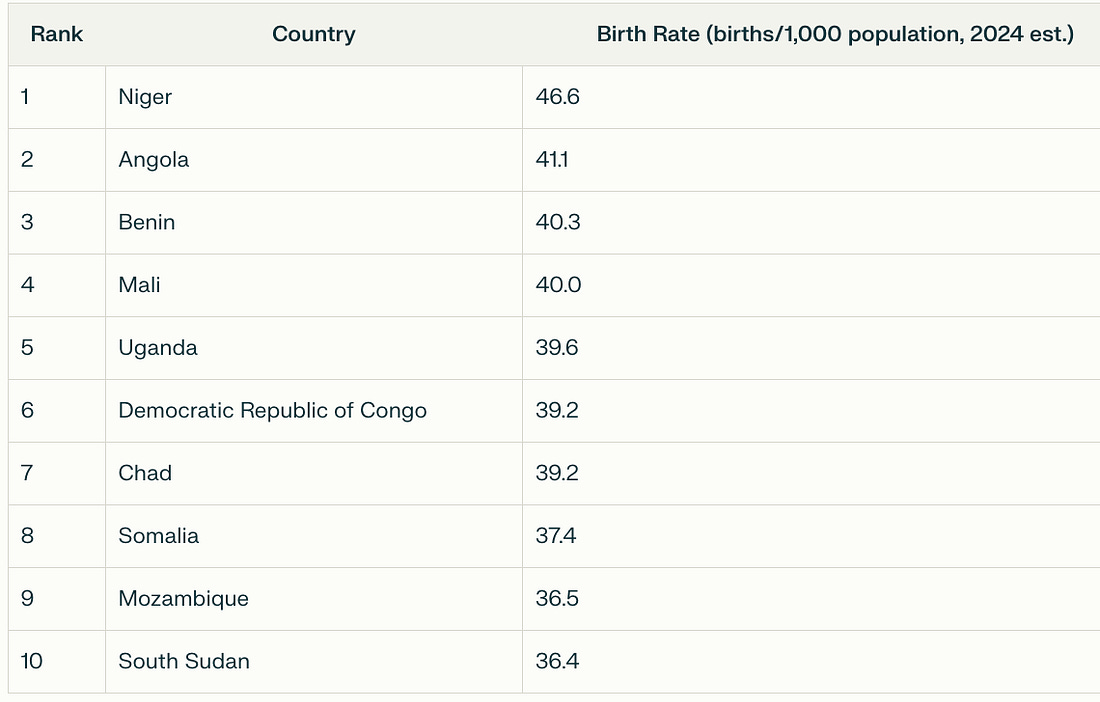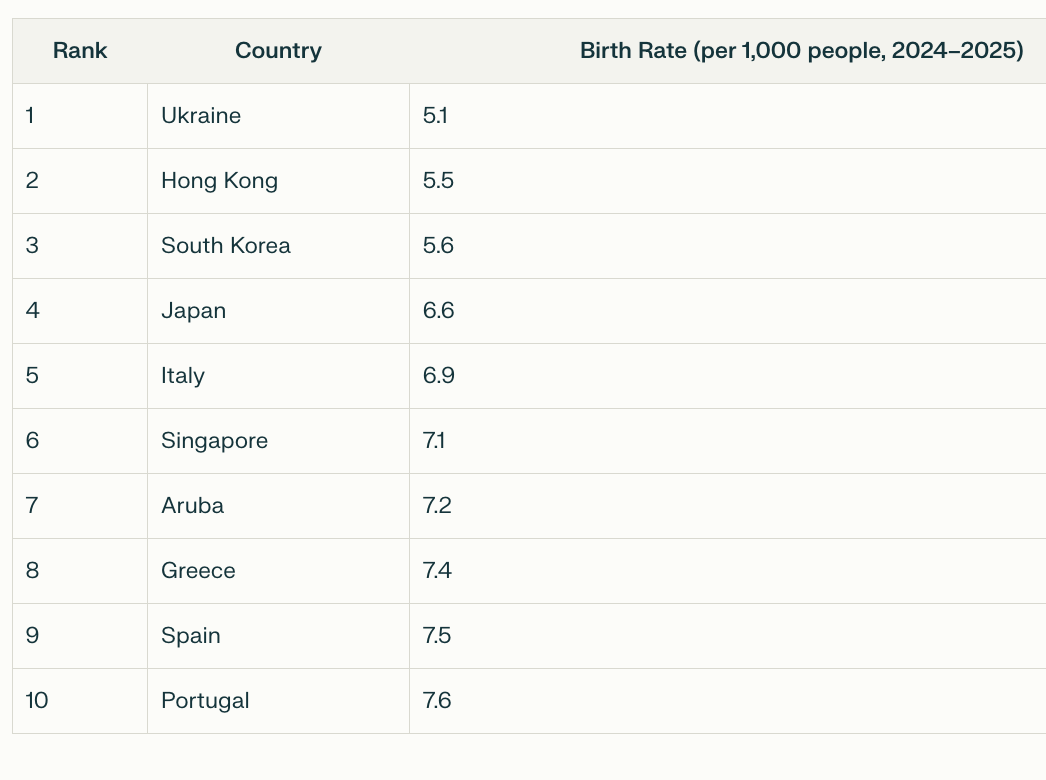Population Control versus Population Growth
Both dynamics can not be true
| ROBERT W MALONE MD, MS APR 28 |

I am not an economist, and I don’t claim to be. But I am a scientist and as such, I have a pretty darn good BS detector. Frankly, I have become profoundly distrustful of the whole modeling industry, whether it be for public health, astrophysics, epidemiology, or economics. All are driven by dogmas in paradigms that don’t shift easily and are influenced by the politics and power structures within the discipline, as outlined by Thomas Kuhn in his seminal book “The Structure of Scientific Revolutions.”
Within the hallowed halls of the United Nations, population control and redistribution models of migration are based on the economic model that population growth is necessary for the financial stability of industrialized societies. These models are then used to justify their various edicts and agendas, such as the Agenda 2030 treaty and the UN office of population dynamics. In my opinion, these core treaties and programs rely on flawed and outdated modeling.
A core principle of economics has long been that a growing working-age population is linked to increased economic prosperity, while an aging or shrinking workforce strains social support systems.
John Maynard Keynes was one of the first in the 20th century to emphasize population growth as a stimulus for economic growth. Declining populations, he argued, risk underconsumption and economic stagnation due to reduced labor and a growing consumer base. His solution was a mix of democratic socialism and high government involvement in markets. He argued for a „comprehensive socialization of investment” and translated that argument into practical applications by becoming involved with socialist politicians and groups like the Fabian Society.
The Fabian Society was founded in London in 1884. Its primary aim was and is establishing a democratic socialist state in Great Britain through gradual, reformist, and democratic means rather than through revolution or violent upheaval. They call for a system of immigration, that is, in their words, pro-prosperity. This, of course, is aligned with Keynesian principles.
Of note, John Maynard Keynes profoundly influenced the formation of the United Nations. His most direct relationship with the United Nations was as the leader of the British delegation to the United Nations Monetary and Financial Conference, commonly known as the Bretton Woods Conference, held in July 1944. Keynes was one of two principal architects of the conference’s outcomes, which included the creation of the International Monetary Fund (IMF) and the World Bank.
Keynes was deeply interested in population issues and advocated for government intervention in population control, influenced by Malthusian and eugenic ideas, particularly in the early 20th century234. He believed that unchecked population growth, especially in countries like India, Egypt, and China, could undermine economic well-being and advocated for policies to regulate both the size and „quality” of populations234. Keynes was also involved in birth control movements and collaborated with leading figures such as Margaret Sanger and Marie Stopes.
-From CHAT-GP3
Recycling Keynesian Principles at the UN
The United Nations Population Fund (UNFPA) is the UN office dedicated to population issues. The website lays out its core tenets in the following screenshot:

Of course, this is precisely what John Maynard Keynes projected with his analyses.
In 2018, the United Nations formulated a foundational document that addresses principles and recommendations for population redistribution based on Keynesian principles of population growth driving economic prosperity in Western nations. This document incorporates many of the ‘accepted conventional wisdom” beliefs traceable to Malthusian/Neo-Malthusian concepts (eg, “Tragedy of the Commons”) regarding overpopulation.
The text of this document includes edicts for the redistribution of populations. This perspective suggests that there is a net economic benefit when young adults from disadvantaged countries are moved to more prosperous ones.
That document is called the Global Compact for Safe, Orderly, and Regular Migrationand lays out a series of objectives, which include the following:
OBJECTIVE 5: Enhance availability and flexibility of pathways for regular migration. We commit to adapt options and pathways for regular migration in a manner that facilitates labour mobility and decent work reflecting demographic and labour market realities, optimizes education opportunities, upholds the right to family life, and responds to the needs of migrants in a situation of vulnerability, with a view to expanding and diversifying availability of pathways for safe, orderly and regular migration.
Review and revise existing options and pathways for regular migration,
Develop flexible, rights-based and gender-responsive labour mobility schemes for migrants,
United Nations Agenda 2030 discusses planned and equitable regional development, urbanization, internal migration, and international cooperation in population redistribution of peoples, which they view as necessary for economic stability and population control.
This is all predicated on the Keynesian and Malthusian principles that migration of people is necessary to 1) increase economic prosperity in industrialized nations and 2) a decrease the earth’s population is necessary for the earth’s to be “sustainable.”
This is all based on flawed economic theories and modeling.
In a Nature article published in 2023, studies of 19 countries with shrinking populations show gross domestic product (GDP) and per capita GDP growth often increase alongside declining populations. This is attributed to higher labor participation rates and productivity gains.
Furthermore, the economies of the 21th century are vastly different from those of the 20st century. New technologies such as robotics, artificial intelligence, and even the internet have made it so people need to work less to maintain a certain standard of living. AI will likely automate a significant portion of work tasks in the future, meaning that technically, each person living in such a society will need to work less. Despite recent setbacks, quality-adjusted life expectancy (QALE) has improved over the past several decades, meaning that people will lead healthier lives for a longer period of time. Hence, the working population may even increase past the normal retirement age. All of this means that those old, antiquated models that advocate for increasing the population to increase economic growth need to be rethought.
Implicit in Agenda 2030 and the various UN population redistribution plans is the idea that wealthier nations have a moral responsibility to assist poorer nations. This is rooted in the philosophy of common humanity: those whose basic needs are met should help those suffering from hunger, disease, and poverty. There is also a built-in bias in the United Nations that much of the wealth in richer countries has historically been built, in part, through exploitation, unfair trade, and environmental harm that disproportionately affects poorer countries. Therefore, the United Nations seeks resources from wealthier nations to redress and globalize social justice in the name of equity. Another name for these types of societal systems is socialism.
The core thesis is that wealthy nations must feed, clothe, and provide energy and money to poorer countries. This course is being promoted as a form of social justice. Yet, around the world, such programs have ended in dismal failure. A corrupt nation is not going to redistribute such wealth equitably. Instead, those in power will take those resources for themselves.
Programs to redistribute land and wealth in Africa-especially in South Africa, Tanzania, and Zimbabwe-have largely been unsuccessful. The general pattern is missed targets, corruption, failed projects, and persistent or worsening inequality.
There is a growing consensus that wealthy nations can not feed the world to lower poverty rates. Food assistance programs are often seen as opportunities used to empower political allies, feed one ethnic group over another, and often have done little to reduce hunger. What these food assistance programs have often done is to decimate localized food production and destroy traditional farming practices, which are frequently much more environmentally friendly since they have stood the test of time in each local environment and context.
Another recent example that demonstrates the lie in this unproven belief system involves the redistribution of secondhand clothing. The naive thesis is that the economies of poorer (primarily African) nations will benefit from an influx of cheap, second-hand clothing from Western countries. The vast amounts of clothing sent over have overwhelmed local markets, making it difficult for domestic textile and garment industries to compete. This has led to massive declines in local manufacturing, job losses, and stunted growth of homegrown clothing manufacturers in Ghana, Kenya, and Nigeria.
In many cultures, children are expected to care for their elderly parents. It is an obligation and a moral duty. It then makes sense that having more children in such a society is paramount to a prosperous retirement. So, what happens when a culture that traditionally has little energy resources, which means food is more challenging to grow, suddenly has a lot of free food dropped off in their village each month? The answer is obvious: it can lead to population growth- in reality a population explosion.
Here are a few summary charts that illustrate the point:
The poorest nations in the world have the highest birth rates.

The top ten countries in the world with the highest birth rate (all found in Africa)

The top ten countries in the world with the lowest birth rate:

To put this in perspective, there were 10.5 births per 1,000 total population in the USA in 2024.
Quantity Versus Quality
The USDA has emphasized quantity over quantity of food to reduce poverty both in the USA and worldwide. This policy has been an abject failure. In this country, it has led to a chronic disease epidemic, as people have been trained to eat vast amounts of simple carbohydrates and sugar – brewed together in a toxic mix of industrial food dyes, preservatives, seed oils, and additives. Synthetic foods have become normalized in the name of safety and necessity.
Furthermore, to the extent that USAID has succeeded in reducing birth rates, it has not been by providing cheap food but by providing contraceptives and contraceptive services. Instead, USAID touted that their programs have had significant humanitarian, health, and socioeconomic benefits, making these programs a critical component of global development and stability. But truth be told, there is scant evidence for that.
Research suggests that food aid and foreign assistance have generally not led to lower African population growth rates. Instead, population growth remains high, and in most cases, foreign aid has been associated with higher fertility and population growth.
To be blunt, food drops and foreign assistance programs create an imbalance within economic and societal systems. More cheap food leads to population growth, not less. Then, the UN and other international organizations work to redistribute that excess population into wealthier nations, based on the false premise that this is a win-win solution – as if this population of untrained, uneducated, and often malnourished immigrants could solve the economic woes of aging, industrialized, and post-industrial highly developed nations.
Sovereign Nations
The Westphalian Doctrine refers to state sovereignty and non-interference principles established by the Peace of Westphalia treaties in 1648, which ended the Thirty Years’ War in Europe. It laid the foundation for the modern international system of sovereign states, each possessing exclusive authority over its territory and domestic affairs without external interference.
The sovereignty of nations, as opposed to a globalized governance system, is at the heart of The United States Constitution.
Let’s assume that most US Citizens wish tTheo ensure that our nation continues to have nice things, such as a healthy environment, food, and shelter. In that case, we need to protect our environment by not allowing unrestricted growth based on immigration. If we wish to preserve our American culture, we need to ensure that we are picky about who becomes a newly minted American via the immigration process. That means that we don’t open the floodgates to everyone.
Instead of worrying about feeding the world, we need to turn inward.
We need to worry about ensuring a strong people by building a strong and stable economy. Not by importing people but rather by building resiliency, health, skills, and capabilities of our own citizens. This is the best way to ensure the health and wealth of our great nation.
The American Renaissance
In recent years, immigration has become the primary driver of U.S. population growth, especially as birthrates have declined. Furthermore, as a nation, we have developed a uniquely American culture that immigrants cannot readily replace. Our national heritage and beliefs need to be nurtured and protected.
Yet here we are – our native-born population is not reproducing at the replacement level for our population. Importing people, like cattle, to ensure economic growth is not a viable solution.
As President Trump grapples with that stagnant birthrate and what that means for the United States, it is essential to remember that this is not just about population but also national heritage.
Luckily, many young adults are challenging the old notion that having more than two children is somehow morally wrong. And they are right to do so. These adults are searching for ways to stretch their money and become more sovereign so that having more children doesn’t break their pocketbook.
Also, if people are hopeful about the future, having children is a natural progression. There is a misconception that having a family is impossible due to the economic conditions within the United States. That is a fallacy, promoted by mainstream media. In fact, many now advocate that women might consider staying at home to have children earlier in life – and then building a career later. This is a very viable strategy. Of course, small, family-owned businesses are often the financial heart of a successful marriage – particularly when one partner works in a trade.
This means now is the time to teach children and young adults about the importance of money management and how to live off of one income. This can be surprisingly cost-effective by incorporating some basic ideas such as having a one car- one family, eating at home, building a career in the trades or starting a small business, buying second-hand clothes, saving, not relying on babysitters and daycare, learning to make-do, just as our parents, grandparents, and great-grandparents did. Pursuing this model means simplifying life down to healthy living.
Just as we must encourage children to consider the trades as a career choice, we must teach children/young adults how to make wise decisions regarding relationships and future partners. So many children now come from broken homes; how do we, as a nation, support these children in learning how to have healthy relationships? How do you build the skills and maturity to have a successful marriage? Learning how to navigate a marriage does require a skill set that kids growing up in a single (primarily female) parent household aren’t learning.
In the end, our future is in the hands of our children. So, let’s make healthy children and healthy families, which will then build strong communities. The weft of a sovereign nation must always be built on uniquely American values – passed from one generation to the next.
And if the population of the United States begins to shrink, let’s stop viewing it as the end of civilization as we know it. Our economy can survive and even thrive without a growing population. Our core values can remain strong. Our country can remain a sovereign and strong nation. And maybe, just maybe, having a stable population isn’t to be feared and isn’t such a bad thing, after all.
Despite the outdated 20th-century logic of John Maynard Keynes. It is long past time to leave 20th-century disputes behind. We must look forward and focus on developing creative, adaptive, 21st-century solutions for 21st-century problems.




